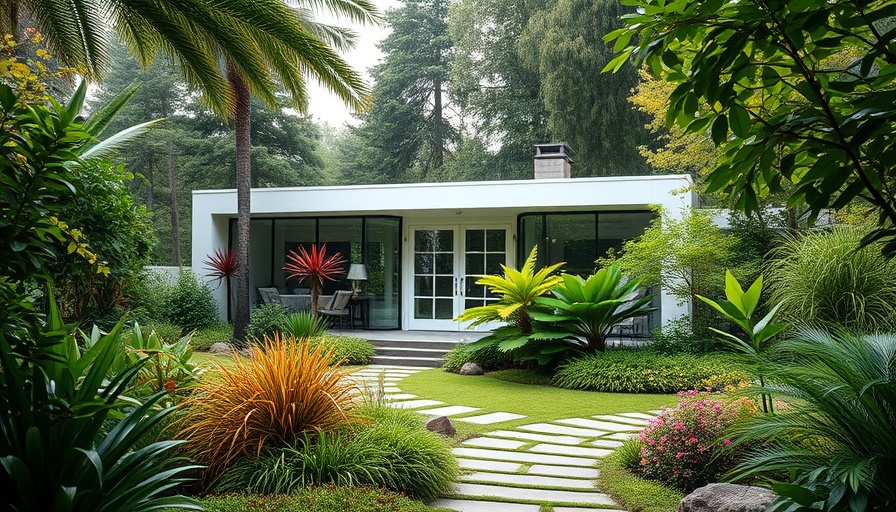
Understanding the Importance of Proper Tree Pruning
Tree pruning is essential for maintaining the health and aesthetic beauty of your trees. Just like regular check-ups are vital to our health, pruning provides benefits that help trees thrive. It encourages growth, improves air circulation, and can even prevent severe damage from storms by reducing wind resistance. Given California's unique climate and diverse urban landscapes, proper pruning practices are vital for city trees that are often stressed by pollution, drought, and limited soil space.
Essential Tools for Tree Pruning
Before starting your pruning journey, having the right tools is crucial. You wouldn't attempt to cook a gourmet meal without quality knives, and the same principle applies to tree care. Here’s a quick guide to the tools you'll need:
- Pruning Shears: Ideal for branches up to 3/4-inch thick.
- Loppers: Best for branches from 1/2 to 2-1/2 inches in diameter.
- Pruning Saw: For branches that are 1-1/2 to 5 inches thick.
- Battery-operated Shears: Excellent for higher branches, offering convenience without needing a ladder.
By investing in quality tools, homeowners can reduce strain and ensure clean cuts for the best healing possible.
When is the Best Time to Prune?
Timing is everything, especially in regions like California where the climate can vary significantly. Generally, the best time to prune is in late fall or early winter. This timing minimizes the risk of pest infestations and diseases that can thrive in warmer temperatures. However, spring and summer pruning can help streamline trees or eliminate deadwood. Always assess the tree’s health and growth patterns to determine the best approach.
Steps to Prune Your Tree Effectively
Following a methodical process is essential to ensure every cut is beneficial. Start by examining the tree's structure:
- Clear the Area: Ensure you have sufficient space to work without interference from other plants or equipment.
- Assess the Tree: Look for dead or diseased branches and determine the tree’s overall health.
- Start at the Bottom: Work your way up. It’s easier to visualize the structure and prevent unnecessary cuts when working from the bottom.
- Make Clean Cuts: Use the appropriate tool for the branch thickness and apply even pressure for clean cuts that will heal quickly.
Keeping clean cuts helps foster faster healing and minimizes the risk of attracting pests.
Common Mistakes to Avoid While Pruning
Pruning can be deceptively simple, but it’s easy to make mistakes that could harm your trees. Here are a few common pitfalls to avoid:
- Over-pruning: Never remove more than 25% of the tree's branching structure in a single season; this can stress the tree.
- Ignoring Tree Health: Always assess the tree's overall health before making cuts. If it shows signs of distress, seeking professional insight might be necessary.
- Neglecting Safety: Always prioritize safety by wearing protective gear and never taking unnecessary risks, especially if using a ladder.
The Long-Term Benefits of Pruning
Proper pruning not only improves a tree's aesthetics but also enhances its survival and growth potential. Pruned trees can better withstand environmental stressors, resist pests, and have improved air circulation, which helps reduce the risk of diseases. For urban homeowners, investing in tree health through pruning can lead to increased property values and contribute positively to the neighborhood.
Resources and Techniques for Successful Tree Pruning
While many homeowners may feel comfortable tackling pruning on their own, knowing when to call in professionals is crucial. Various services can help ensure trees get the care they deserve. Look for local arborists who understand urban forestry concerns. They can provide insight tailored specifically for the California region, combining knowledge of local species and conditions.
Conclusion and Next Steps
In conclusion, learning to prune trees effectively is vital for any California homeowner looking to contribute to their garden's health and aesthetic value. By investing a bit of time and care into your trees, you're forging a strong bond with nature and enhancing the beauty of your living environment.
Call to Action: Start with a single tree this season. Remember to plan accordingly and assess its health. Your green sanctuary awaits!
 Add Row
Add Row  Add
Add 




Write A Comment